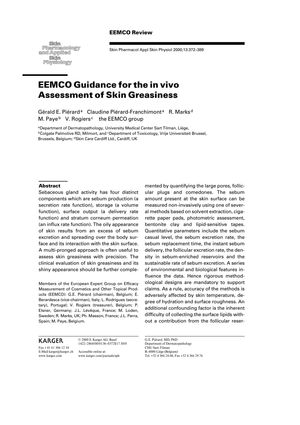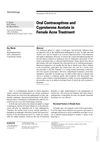EEMCO Guidance for the in vivo Assessment of Skin Greasiness
January 2000
in “Skin Pharmacology and Physiology”

TLDR The document recommends using both clinical evaluation and various measurement methods to assess skin greasiness, considering factors like temperature and hormones.
The document from 2000 provides guidance on the assessment of skin greasiness and sebum excretion, detailing various methods and parameters for measurement. It recommends a combination of clinical evaluation and quantitative methods, such as solvent extraction, cigarette paper pads, photometric assessment, bentonite clay, and lipid-sensitive tapes, to measure sebum casual level, excretion rate, and replacement time. The document highlights the use of devices like the Sebumeter® and Lipometer®, as well as the importance of considering factors like skin temperature, hydration, and hormonal influences that can affect sebum excretion. It also discusses the relationship between skin greasiness and conditions like acne and androgenetic alopecia, emphasizing the need for rigorous methodological designs and controlled conditions to obtain credible data. The document underscores the complexity of sebum excretion, influenced by age, gender, individual factors, and chronobiological variations, and its relevance for the management of skin conditions and the development of skincare products.
View this study on karger.com →
Cited in this study

research Oral Contraceptives and Cyproterone Acetate in Female Acne Treatment
Birth control pills and cyproterone acetate can help treat acne in women, especially when linked to hormonal issues.
Related

research A Comprehensive Review of Acne Vulgaris
Acne can't be cured but can be managed with treatments like benzoyl peroxide and diet changes; it's costly and can lead to scarring and mental health issues.